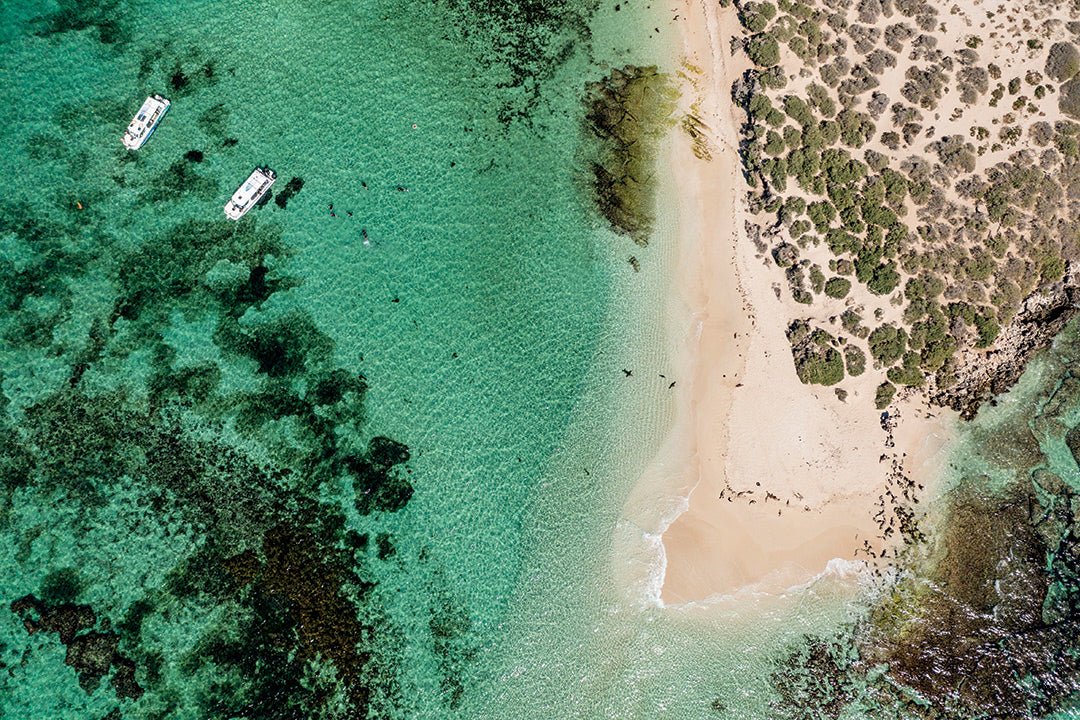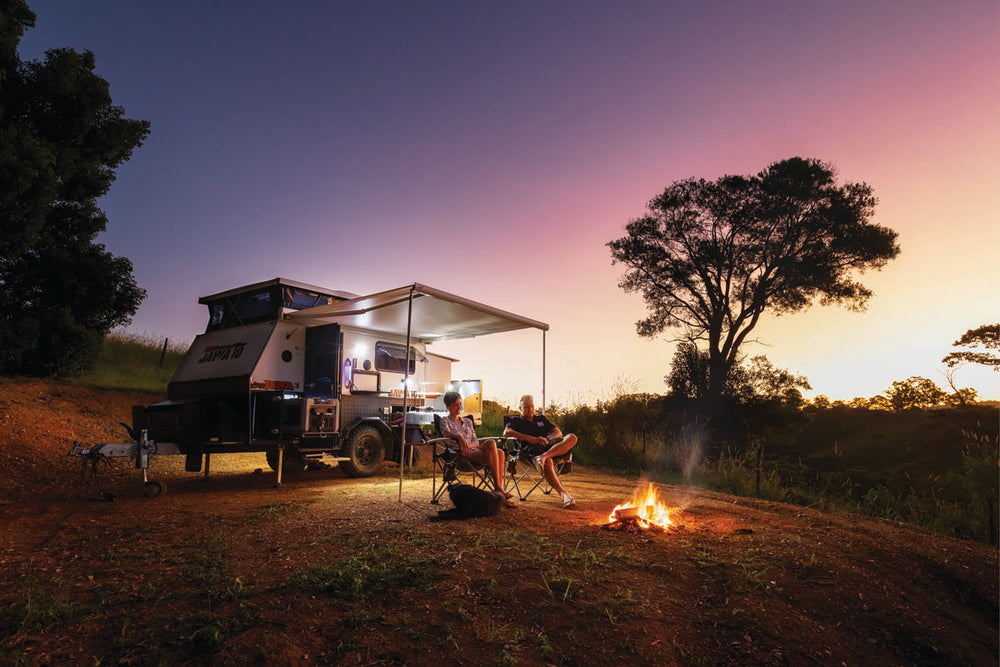

Julia D’Orazio explores Western Australia's Turquoise Coast, just a few hours north of Perth and brimming with stunning beaches, marine life and so much more.
I’d forgotten how good life just up the road can be. Western Australia’s so-called Turquoise Coast consists of sleepy coastal towns Cervantes, Jurien Bay and Green Head and inland towns Dandaragan and Badgingarra, all within a roughly two-to-three-hour scenic drive north of Perth.
The biologically diverse region is a convenient escape for Perth dwellers to tuck into freshly caught western rock lobster, swim with sea lions, see wildflowers and explore surreal and ancient rock formations ranging from sponge-looking (and living) organisms to soaring lunar-like growths.
This time, I stuck to inhaling salty air and feeling the might of the prevailing winds, with Jurien Bay, 218km north of Perth along Indian Ocean Drive, first in my sights.
Getting hands-on in Jurien Bay
This sleepy coastal town of 2000 residents is known as one of the state’s premier skydiving destinations. While visuals of the adventure sport look exhilarating — enjoying a slow descent over blends of aquamarine and turquoise waters — I preferred staying grounded doing exciting things in Jurien Bay that didn’t require dare-devil vigour.
Instead, my partner and I chose to get our highs fishing for weekend supplies. We joined Jurien Bay Oceanic Experience for a rock lobster catch-and-keep tour. The locally owned family-run business operates the hands-on, two-hour tour up to three times weekly, with each punter able to take up to eight of the state’s prized ‘cockroaches of the sea’ home. (The legal number for tourist charters is capped at 80.)
 On the boat with Jurien Bay Oceanic Experiences
On the boat with Jurien Bay Oceanic Experiences
 Sizing them up
Sizing them up
Crayfish recipes (and my hair) swirled around my head as we sailed north of Jurien Bay, battling strong winds. It wasn’t an ideal day to be on a boat despite a sunny appearance, but my desire for the highly sought lobster and having a morning out at sea triumphed over lousy weather. I was one of 10 hungry tourists glued to watching our guides reel each 80kg cray pot into the rocking boat, the ocean rolling high behind. Between the crew hauling pots overboard, we learned to become pro cray-catchers, measuring crays for legal size and knowing what to look out for (male versus female and if carrying eggs).
Ten pots were pulled, most fruitful, a couple not so much, with empty crayfish shells (if that) remaining, food scraps of ravenous octopi. Thankfully, it was a good day’s fishing. We were the beneficiaries of the crew’s hard work, rewarded with the ‘edible currency’ by taking five crays each. It looked like I’d be making more than one dish…
Headed for some R&R
Later in the evening, we checked into Jurien Bay Tourist Park. The pet-friendly caravan park is steps from Jurien’s peaceful shores and offers more than 50 powered and unpowered sites.
Between the caravan park and the beach is Jurien Bay Beach Cafe. Forming part of the revitalised foreshore precinct, the upmarket casual beachside eatery offers breakfast, seafood-heavy lunches and pub grub staples and has a liquor licence. A long bartop — remnants of Jurien’s old wood jetty — borders the cafe. We enjoyed a tipple along it while we overlooked the town’s curved concrete pier, watching fishers try their luck at its tip.
 Jurien Bay Jetty is a great spot to take in the sights (Image Tourism WA) (Image Tourism WA)
Jurien Bay Jetty is a great spot to take in the sights (Image Tourism WA) (Image Tourism WA)
 The curved pier is popular with anglers and those after a short walk with beautiful views
The curved pier is popular with anglers and those after a short walk with beautiful views
With the winds picking up gusto, we headed to Kakka Alley Brewing Co, a short drive (five minutes) away in Jurien’s industrial district. The three-year-old microbrewery is a vintage collector’s (or hoarder’s) paradise. Maritime relics, including buoys and orange life rings, dangle on its walls alongside boat parts and fake shark heads. Outside, replica seagulls on string hovered over tables (a good deterrent from chip-stealing behaviour).
Pizza is the snack food of choice, and we ordered the namesake ‘Kakka Alley’, topped with prawns and crayfish, capsicum, shallots and cheeses. We enjoyed it away from the winds and felt part of the local crowd, perched at a high-top table admiring the nautical-themed grounds. The colourful and popular spot attracts families and features a kid’s playground area. We were told live music happens sporadically and to check socials for upcoming events.
 Nautical memorabilia at Kakka Alley Brewery Co
Nautical memorabilia at Kakka Alley Brewery Co
 The signature Kakka Alley Co pizza is topped with prawns
The signature Kakka Alley Co pizza is topped with prawns
Swimming with the ocean’s play dogs
We were back at Jurien Bay Oceanic Experience before 7am to swim with the town’s other much fawned-over residents. The Australian sea lion is the rarest sea lion species in the world, found in small colonies along WA and SA’s coastline.
Jurien Bay Marine Park is the sea lion’s only breeding ground on the west coast, joining nesting seabirds, osprey and fairy terns. The park extends 5.5km offshore from Wedge to Green Head. Offshore islands, sheltered lagoons and a long limestone reef make the park a preferred spot for recreational activities.
Ten of us were onboard, resembling sea lions in our hired black wet suits. We headed south along the coast, cruising for 30 minutes in calm waters until we reached Essex Island. Sunbathing sea lions were spotted on the small islands’ golden shores, frolicking in and out of turquoise water. One sea lion on the island tested its vocal cords, with its head tilted into the air, screeching — almost wailing. It was nothing like I’d ever heard before. Was it welcoming us or telling us to bugger off? I joked to the others onboard.
After our briefing, we jumped into the marine park’s frigid waters. Swims are capped at 45 minutes and are conducted outside the island’s 50m exclusion zone. Sea lions are often nicknamed the dogs of the ocean because of their playful and inquisitive nature. It wasn’t long until four sea lions joined us in the limestone reef’s shallow waters, poking their heads through seagrass, performing somersaults and quick turns within metres. Unlike other hosted swims with marine life (whale sharks, bottlenose dolphins and humpback whales), it felt like the sea lions welcomed our presence, constantly making eye contact while showing off.
Despite the cold, I stuck around for the allocated time until we were summoned back on board. Luckily, the chill factor was short-lived, with coffee served as we returned to land and reality.
 Jurien Bay foreshore
Jurien Bay foreshore
Continuing the coast’s red-hot trend
Things continued to get hotter as we visited the Lobster Shack in Cervantes, 27km south of Jurien Bay.
What started as a remote lobster factory with one boat, Sealips, in 1966 is now a big drawcard for crayfish enthusiasts. The family-run business has expanded over the decades, with the factory, restaurant, and tours available on-site and at sea.
Before filling our bellies, we took a 30-minute factory tour ($15) to learn about Australia’s most valuable single species and the handling process — from ocean to export — in the live lobster processing plant. I had my turn handling live crays, with one weighing 900gm. Imagine the banquet with that one!
Next door is where most people go for another hands-on, immersive lobster experience: the restaurant. The oceanfront venue is a tourist institution with multiple dining spaces, large fish tanks and a kid’s playground. There was a lively atmosphere across all sections, and we headed outside to make the most of the good sunny weather and vibes on the deck.
The setting was enhanced when our colossal seafood platter for two arrived. Our omega-three threshold was tested with the hero ingredient served alongside locally caught seafood such as prawns, octopus, oysters, squid and fish on a bed of chips. If you’re going to splurge on a meal along this stretch of coast, this should be it.
Peak viewing
One of the Indian Ocean Highway’s most famed attractions is Nambung National Park, better known as the Pinnacles, 23km south of Cervantes.
The 17,487ha park feels otherworldly with its lunar-like landscape. A sea of limestone pillars, some in clumps, some as lone sentinels, are spread across the shifting pale-gold desert sands. The local Yued people refer to the Pinnacles as ‘Kwong-kan’ (sandy place). The giant limestone monoliths have been estimated to have formed 25,000 to 200,000 years ago due to weathering. They believe the rocks represent the fingers and hands of warriors engulfed by the earth for defying their elders.
 Pinnacles desert park (Image Tourism WA)
Pinnacles desert park (Image Tourism WA)
The contrast between the clear sky pointed rock towers, and yellow earth is a vivid sight. A day ticket to enter the park is $17 per vehicle per day. As the sun belted down, we toured the park via car for a more comfortable exploration. There are ample spots along the one-way car trail to pull over and wander around the rocks. Kangaroos and emus are known to lurk in the park. I was delighted to spot an emu darting between distant pillars to make its leisurely journey down dunes.
One of the best places to appreciate the region’s unique combination of landscapes is from the park’s viewing platform. Take in the wide vistas of the desert pinnacles, adjacent shifting white sand dunes and coastal vegetation bound by the Indian Ocean. To learn more about the region’s geology and history, head to the Pinnacles Desert Discovery centre, featuring interpretive panels, soundscapes and displays.
More peculiar rocks can be found 20km north of the visitor centre. Lake Thetis is home to the sponge-like small domes thrombolites and its relative rock, stromatolites, the world’s oldest ‘living’ fossil. The shallow lake is one of five places in the state to see the latter, with the oldest stromatolites found in the Pilbara and dating 3.5 billion years. Both low-lying rock types at Lake Thetis are like toddlers in comparison, roughly 3000 years old. The local Yued people believe the rocks are eggs from the giant rainbow serpent, Waakgardy.
After following the 300m boardwalk to inspect the ancient rocks closely, we followed the Lake Thetis Loop Trail. The easy 1.5km circuit around the lake is on compacted ground. We spotted kangaroos hiding in heath lands and migratory shorebirds frolicking along the water as we strolled through bushlands.
There’s a bit of everything to be found in this area — even those otherworldly — and only just up the road from Perth. How good.
 There are plenty of ways to enjoy the Turquoise Coast (Image Tourism WA)
There are plenty of ways to enjoy the Turquoise Coast (Image Tourism WA)
Travel planner
P: 08 9652 1595
E: stay@jurienbaytouristpark.com.au
P: 0432 806 234
E: info@jurienbayoceanic.com.au
P: 08 9652 7010
P: 0427 537 004
P: 08 9652 7913
THE NEXT STEP
If you want to learn the latest caravan news, find the most innovative new caravans and camping gear or get inspiration for your next adventure to a great holiday destination or several, subscribe to our weekly newsletter . We promise to send you only the best content.
Related articles:
Western Australia is home to some spectacular destionations, pristine beaches and national parks. To keep your adventure going, check out the travel stories below.
Kalbarri calling: Explore this beautiful WA town and the iconic Kalbarri National Park
Gnaraloo Station, WA: Experience the stunning Ningaloo reef and so much more







